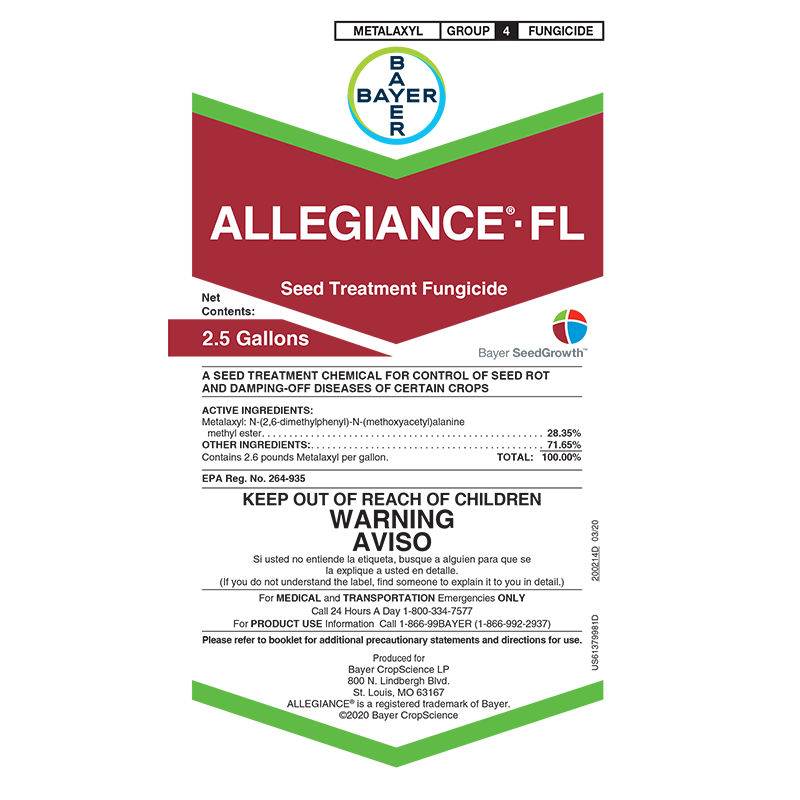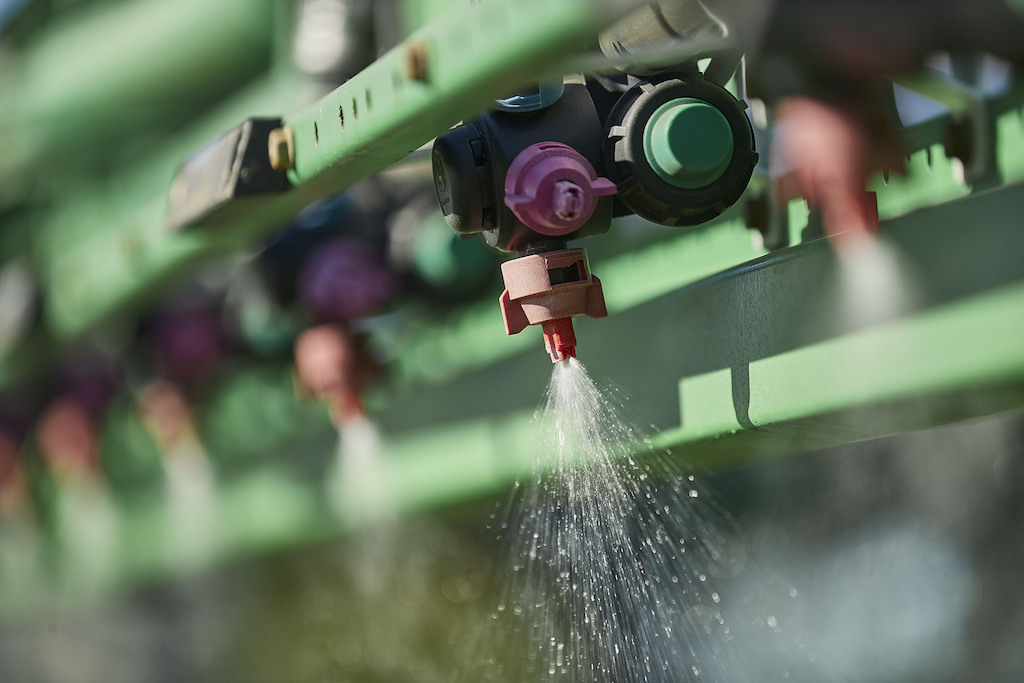Allegiance FL Seed Treatment Fungicide
Seed TreatmentAllegiance® FL Seed Treatment Fungicide provides systemic protection for the seed, roots and emerging plants against devastating diseases such as Pythium, systemic downy mildew and Phytophthora. It provides protection for early planted crops and helps produce healthier, more vigorous and uniform stands. Allegiance is applied at very low rates per acre, making it friendly to the grower, seed and environment.
Approved In
AL, AR, AZ, CA, CO, CT, DE, FL, GA, HI, IA, ID, IL, IN, KS, KY, LA, MD, MI, MN, MO, MS, MT, NC, ND, NE, NJ, NM, NV, NY, OH, OK, OR, PA, SC, SD, TN, TX, UT, VA, WA, WI, WY
Labels / Safety Data Sheets (MSDS)
ALLEGIANCE FL SEED TREATMENT FUNGICIDE Label
ALLEGIANCE FL SEED TREATMENT FUNGICIDE MSDS - Spanish
ALLEGIANCE FL SEED TREATMENT FUNGICIDE MSDS - Spanish
ALLEGIANCE FL SEED TREATMENT FUNGICIDE MSDS - English
ALLEGIANCE FL SEED TREATMENT FUNGICIDE MSDS - English
Only for Use in Commercial Seed Treating Establishments
Effective Against
Our portfolio has products to fight a variety of weeds, pests and diseases.
downy mildew
phytopthora
pythium
seed decay
Registered Crops
Our products are available for use on a variety of different crops.
checkcorn
checkcotton
checkrice
checksoybeans
